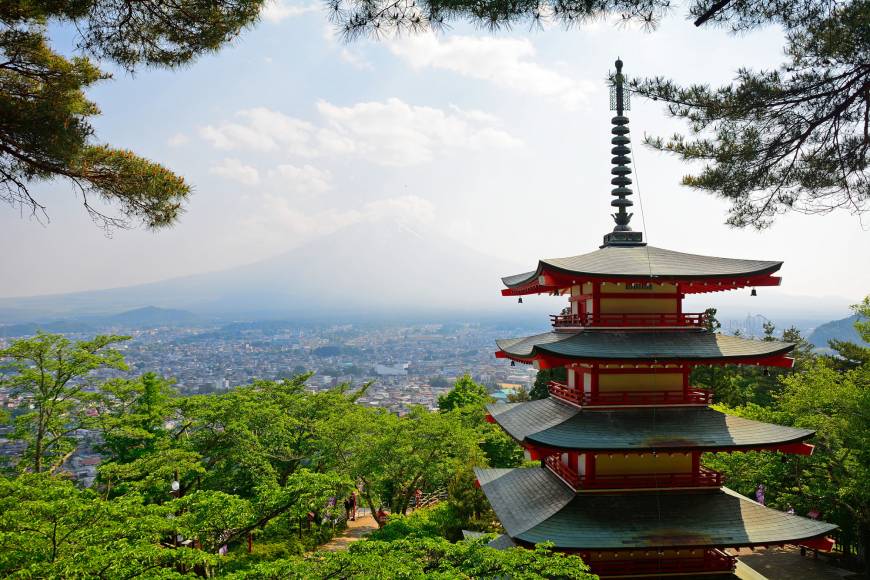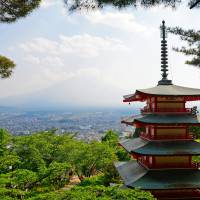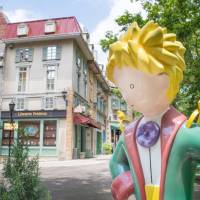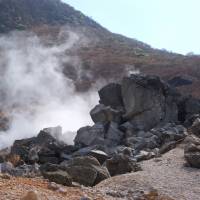Hakone flourished as a stopover on the road connecting Tokyo and Kyoto many years ago. It is said that many people have healed away the weariness of travel in this town where people today still enjoy the hot springs.
Hakone is located in the center of Fuji-Hakone Izu National Park. It is well-known as a hot spring spa and sightseeing destination. The area has been extremely popular not only for the beautiful natural vistas, but also for various museums and other leisure facilities, as well as festivals and events that visitors can enjoy throughout the year, such as the Hakone Ekiden, the relay marathon contested by university teams shortly after the new year.
Getting there From Shinjuku: Take the “Romancecar,” Odakyu’s Limited Express, from Shinjuku Station to Hakone. From Yokohama: Take the JR Tokaido Line from Yokohama to Odawara, then to Hakone.
Just 85 minutes!
The Romancecar is Odakyu Electric Railway Co.’s limited express train. Although the name is well-known by many people, there is no record of how the name came about. One theory is that the term is derived from an old trend in places such as movie theaters for two-person seats, which were called “romance seats,” while another theory is that the name came about as Hakone was a very popular destination for honeymooners.
Direct trains between Shinjuku and Hakone-Yumoto started operating in 1950, and by the following year the Romancecar name had been established.
The cars that are currently operating as Romancecar have four models ranging from LSE (7000 type) that debuted in 1980 to MSE (60000 type), which debuted in 2008. All types of cars have enthusiastic fans and are familiar to many people, and each type of romance car offers a few types of seats to give a comfortable ride.
A limited express surcharge is required to take the Romancecar. The total price from Shinjuku to Hakone-Yumoto is ¥2,080 (limited express surcharge of ¥890 plus the normal fare ¥1,190). The price is the same for all types of Romancecars. Reservations are accepted one month in advance, and tickets can be reserved online. Passengers can not only choose the desired train type, but also specify the seats, including the very popular observation deck seat or the saloon seat.
Romancecar information: www.odakyu.jp/romancecar/line_up/ Price list: http: //www.odakyu.jp/romancecar/charges/ Multi-lingual Romancecar site: www.odakyu.jp/global_site/ In-car menu: http: //www.odakyu.jp/romancecar/features/food_menu/
Odakyu Department Store
People can buy bento in the basement of Shinjuku’s Odakyu Department Store before taking the Odakyu Romancecar straight to Hakone.
A variety of box lunches and deli items can be found on the second basement floor of the store — from authentic Japanese food to international dishes that people may be more familiar with.
There is a foreign customer service counter on the first floor, as well as a variety of shops on every floor. With assistance in several languages available, people can enjoy shopping comfortably.
Odakyu Department Store: www.odakyu-dept.co.jp/shinjuku/floorguide/
Hakone Sightseeing Cruise
The Hakone Sightseeing Cruise, which is taken on a replica of a pirate ship, is one of the most popular tourist attractions.
The cruise on Lake Ashi is a well-known Hakone attraction, as well as the main mode of transport between the Hakone Ropeway Station at Togendai and the two townships of Motohakone-ko and Hakone-machi.
From the deck of the Hakone Sightseeing Cruise, passengers can enjoy the scenery of Lake Ashi, the vermilion shrine gate of Hakone Shrine, and a spectacular view of Mount Fuji on clear days. There are three different ships: the Vasa, Victory and Royal II. Passengers can enjoy a comfortable cruising experience on all three.
Chaya Honjin Hotoriya, the restaurant and souvenir shop located right by Hakone-machi port is an ideal spot to take a break, while enjoying the picturesque vista of Lake Ashi.
Hakone Pirate Ship: www.hakone-kankosen.co.jp/index.php Chaya Honjin Hotoriya: www.hakone-kankosen.co.jp/restaurant/hotoriya/index.html
Hakone Ropeway
The charm of Hakone Ropeway is that it offers breathtaking views throughout the year. The Hakone Ropeway service operates at approximately one-minute intervals, and it takes 30 minutes from Sounzan Station to Togendai Station, both over 700 m above sea level. It also allows visitors to take in such spectacular views as the blue waters of Lake Ashi, the rising volcanic fumes around the Owakudani hot-spring area of Mount Hakone and the grandeur of Mount Fuji on a clear day.
After a volcanic eruption on Mount Hakone in June 2015, entry into certain areas of the Owakudani area was restricted until the density of volcanic gas receded and safety was assured. By July last year, restrictions were lifted and the area except for hiking trails and the nature observation path has reopened to the public.
The ropeway offers an exquisite view from above while surrounded by some of the most famous sights in Hakone.
Hakone Ropeway: www.hakoneropeway.co.jp
Little Prince Museum
The Museum of The Little Prince in Hakone (Musee du Petit Prince de Saint-Exupery a Hakone) is a museum in Sengokuhara that opened in 1999. The museum is dedicated to the titular character from “The Little Prince” written by Antoine de Saint-Exupery.
The recommended sightseeing route of the museum is to go from the entrance, walking through the European Garden created by Garden designer Keiko Yoshiya, followed by Prince street, the exhibition halls, the church and the Chateau of Saint-Maurice-de-Remens. At the restaurant, visitors can enjoy the recently renewed menu items inspired by the book.
Also, the gift shops sell various goods related to the book, some of which are popular collectors’ items.
Museum of The Little Prince in Hakone: www.tbs.co.jp/l-prince/ Gift shop merchandise: www.tbs.co.jp/l-prince/shop/old/index.html
Hakone Freepass
The Hakone Freepass is a discount excursion ticket offering full coverage of major sightseeing destinations in Hakone. Themost popular places are Yumoto, Miyanoshita, Gora, Sengokuhara, Sounzan, Owakudani, Lake Ashi and Moto Hakone. The pass allows people to freely visit within a specified area, as well as providing discount admission to various attractions in the area.
Additionally, it includes return transportation on the Odakyu Line, as well as on eight different types of transport in the area, such as the Hakone Tozan Line and the Hakone Ropeway, allowing the freedom to thoroughly explore Hakone. The Hakone Free pass is valid for either two or three days.
Hakone Freepass: www.hakonenavi.jp/ticket/before/hakonefree01/ab_hakonefree01/


 Click to enlarge
Click to enlarge


